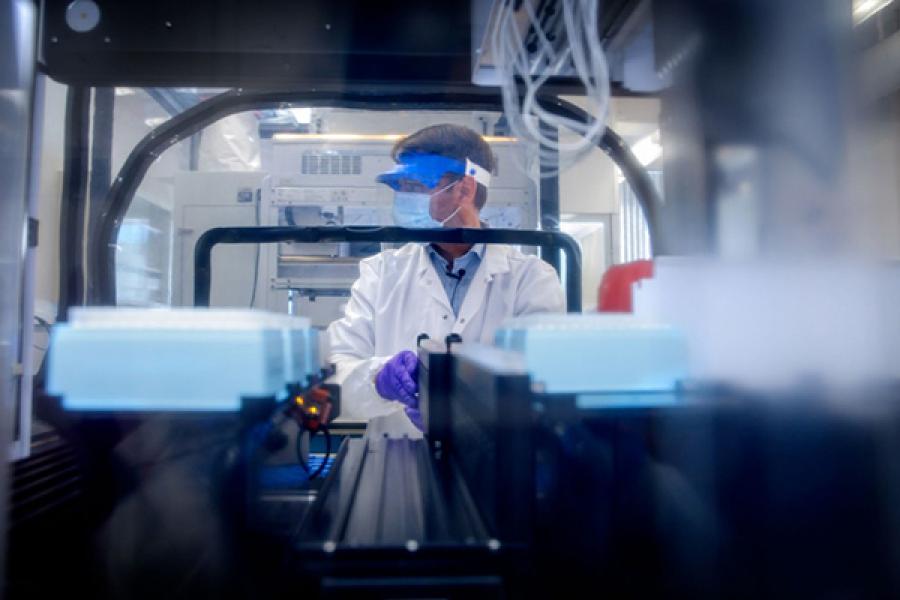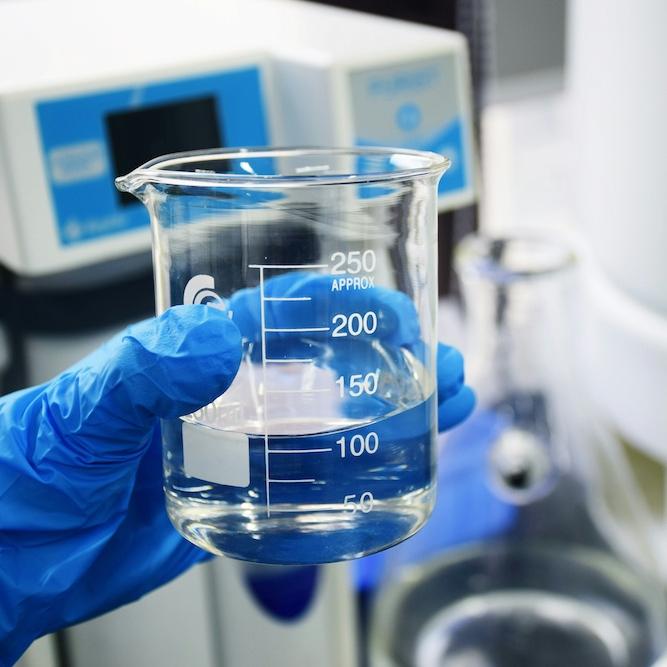When Jeff Pleiss, associate professor of molecular biology and genetics in the College of Arts and Sciences, began studying RNA biology two decades ago, he could not have known that the kind of high-volume RNA analysis his lab performs on single-cell yeast would have any importance in fighting a pandemic.
Pleiss studies rare RNA species in different, changing environments, elucidating pathways in RNA biology that are critical for gene expression in eukaryotes. To do this, he must take cellular mixes and robustly and carefully separate RNA in order to identify different RNA species. Identifying COVID-19 in humans requires similar separation of RNA.
In a typical day, Pleiss’ lab examines up to 20,000 specimens at a time. When Cornell was faced with the challenge of developing its own testing system, Pleiss stepped forward to offer his lab’s experience with RNA processing. They use a robotic process to pool specimens to achieve such a high volume. The Cornell COVID-19 Testing Laboratory (CCTL) acquired similar robots, and the Pleiss lab Ph.D. candidate Zach Dwyer helped to write the scripts for the liquid handlers to prepare sample pools.
CCTL is housed in and led by the College of Veterinary Medicine’s Animal Health Diagnostic Center (AHDC). The AHDC had been handling thousands of clinical samples from animals a day and now was adapting and expanding their routine testing for COVID-19. As a Level 1 laboratory of the National Animal Health Laboratory Network (NAHLN) the center was set up to test 800 to 1,200 samples for animal infectious diseases in one work shift; using robotic liquid handlers with Pleiss’ input now facilitated the processing of 5,000 to 7,000 tests a day.
Members of the Pleiss lab, which like the AHDC and CCTL use a 96-well format and similar equipment, are looking for ways to further streamline and enhance efficiencies of CCTL’s critical work by investigating the possibility of testing larger pools.
The Pleiss lab also has experience using standard, off-the-shelf components for the testing process rather than more expensive commercial kits, which enables them to achieve their high volume of testing in an affordable way. And commercial kits can be subject to global supply limitations, Pleiss said, adding that such kits are like pre-made chocolate chip cookie dough.
“Pre-made dough is easy to make into cookies, but package availability may be limited,” he said. “Sugar and flour and eggs, though, are almost always available, so you’ll never run out of the components.”
With high-volume testing underway at CCTL, Pleiss and his students continue to explore ways that their expertise can support Cornell’s COVID-19 testing system.
“Jeff’s lab illustrates how researchers from different fields have mobilized to support Cornell through this pandemic, and how scientists doing foundational, curiosity-driven research can make meaningful contributions to applied problems,” said Andrew Bass, the Horace White Professor of Neurobiology and Behavior and senior associate dean in Arts and Sciences.
“We are working in parallel with CCTL, staying out of their way while looking for ways to optimize what they’re doing,” Pleiss said. “The goal is to get throughput higher and costs even lower, all without sacrificing sensitivity.”






